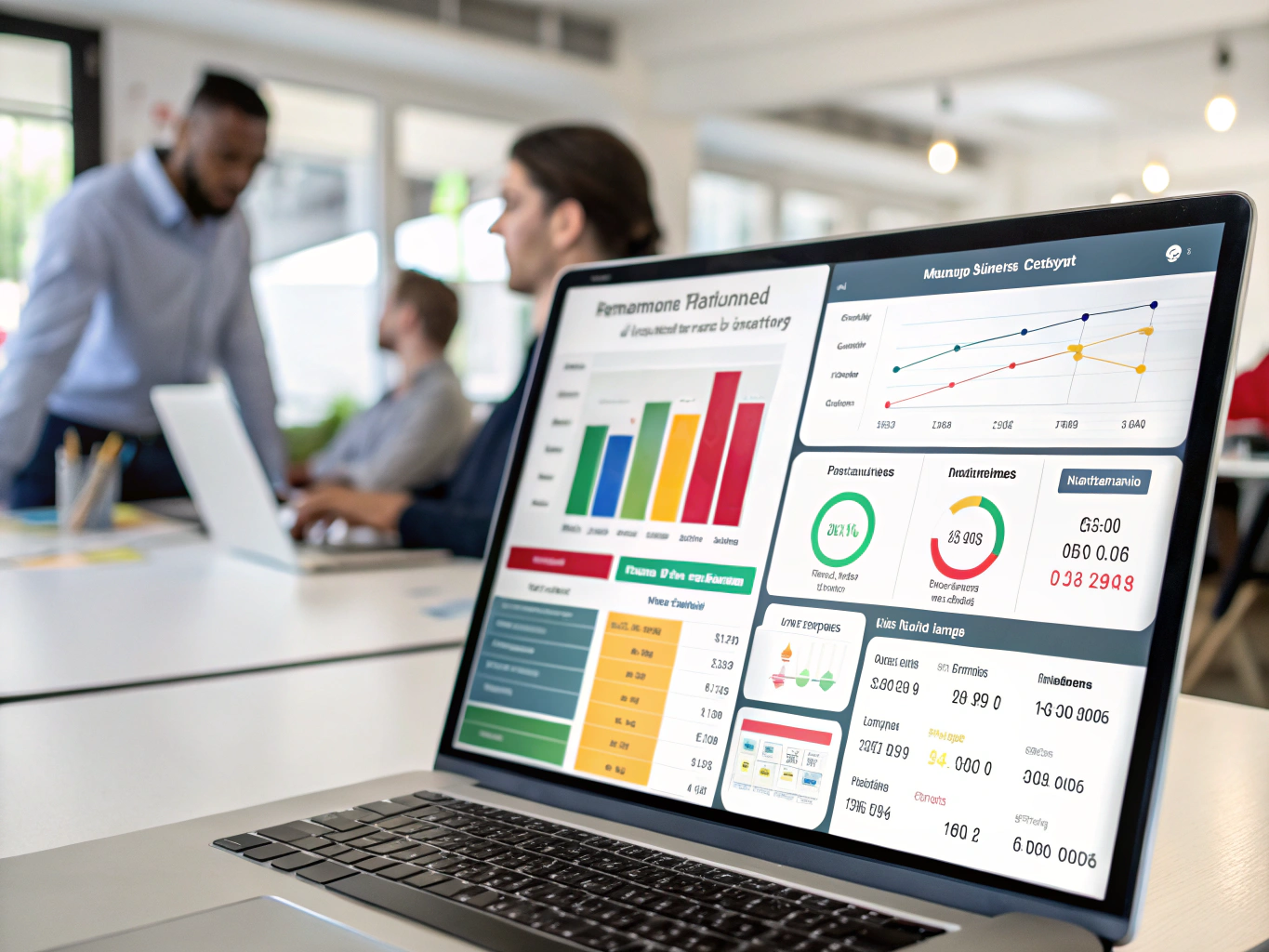How to Track Employee Productivity Without Micromanaging
Are you trying to figure out >how to track employee productivity without breathing down your team's necks? You're not alone. The line between helpful oversight and soul-crushing micromanagement is thin.
I've seen both sides of this coin. When done right, >employee productivity tracking boosts performance and morale. When done wrong, it tanks both.
In this guide, I'll share practical ways to monitor productivity while building trust, not destroying it. These strategies work whether your team is remote, in-office, or hybrid in 2025.
Why Traditional Productivity Monitoring Fails
Old-school >productivity monitoring tips often backfire:
- Constant surveillance creates anxiety, not productivity
- Time-tracking without context measures presence, not output
- Micromanagement signals distrust and kills motivation
- Focusing only on quantifiable metrics misses the quality aspect
One client told me they lost three top performers after implementing keystroke monitoring. The message they accidentally sent: "We don't trust you."
Setting Clear Expectations First
Before you can track performance, everyone needs to know what "good" looks like:
- Define specific, measurable goals for each role
- Establish clear deadlines and priorities
- Document expected quality standards
- Agree on communication protocols
The best way to >track employee performance is through a shared understanding of expectations.
7 Non-Intrusive Ways to Monitor Productivity
1. Focus on Outcomes, Not Activity
Smart leaders track deliverables, not hours worked. Consider:
- Project completion rates
- Quality of work produced
- Client satisfaction scores
- Revenue or cost-saving contributions
A marketing agency I work with stopped tracking hours and started tracking client deliverables. Their team satisfaction increased by 42%, and client retention improved.
2. Implement OKRs (Objectives and Key Results)
OKRs align individual work with company goals:
- Set quarterly objectives that support business priorities
- Define 2-5 measurable key results per objective
- Make progress visible to everyone
- Review regularly in 1:1s and team meetings

3. Use Project Management Tools Effectively
Modern >workplace productivity tools provide visibility without surveillance:
- Asana, Trello, or Monday.com for task tracking
- Automated status updates to reduce manual reporting
- Dashboards showing team progress
- Documentation of completed work
These tools show progress without the need to constantly check in.
4. Regular Check-ins Over Surveillance
Replace surveillance with structured communication:
- Weekly 15-minute one-on-ones focused on blockers
- Daily standups (keep them under 15 minutes!)
- End-of-week accomplishment sharing
- Monthly deeper dives into progress on key objectives
A tech company I consulted with replaced their screen monitoring software with twice-weekly 15-minute check-ins. Employee satisfaction rose 36% and productivity increased by 22%.
5. Customer Feedback as Productivity Metrics
Sometimes the best judges of your team's effectiveness are your customers:
- Net Promoter Score (NPS) surveys
- Client retention rates
- Testimonials and reviews
- Support ticket resolution time and satisfaction
These external measures provide unbiased insights into how efficient your team really is.
6. Peer Recognition Systems
Let employees acknowledge each other's contributions:
- Implement tools like Bonusly or Hey Taco
- Create channels for public praise
- Share wins in team meetings
- Use peer reviews as part of performance assessment
Peer recognition often identifies valuable contributions managers might miss.
7. Self-Assessment and Reflection
Empower your team to evaluate their own productivity:
- Weekly accomplishment logs
- Monthly self-assessments against goals
- Quarterly reflection on growth areas
- Personal productivity tracking with tools they choose
Self-awareness often drives improvement better than external monitoring.
Red Flags You're Crossing Into Micromanagement
Watch for these warning signs that your >effective employee tracking 2025 has gone too far:
- You're checking in multiple times per day
- Employees seem hesitant to make decisions without approval
- You're frequently correcting minor details
- Team members seem anxious or defensive in updates
- Your calendar is packed with status meetings
- You can't resist redoing others' work
If you recognize these behaviors, it's time to step back and rebuild trust.
Technology That Helps Without Hurting
The right tools can help you >improve team efficiency without micromanaging:
- Project dashboards: Tools like ClickUp or Notion provide visual progress updates
- Goal tracking software: Platforms like Perdoo or Weekdone for OKR management
- Team collaboration tools: Slack, Microsoft Teams with appropriate boundaries
- Automated reporting: Scheduled updates that don't require constant check-ins
- Knowledge bases: Document progress and learning for institutional memory
Need to supercharge your own productivity while leading others? Check out our >AI for Productivity eBook + Checklist: Supercharge Your Efficiency in 2025 to learn cutting-edge techniques.
How to Implement Productivity Tracking That Works
Follow these steps to roll out productivity tracking that empowers rather than alienates:
- Involve your team in selecting metrics and tools
- Explain the "why" behind tracking (improvement, not punishment)
- Start with a pilot program and gather feedback
- Adjust based on what you learn
- Focus on trends, not individual data points
- Use insights to remove obstacles, not assign blame
- Celebrate progress and improvements
A manufacturing company I worked with saw a 28% productivity increase after involving line workers in designing their own performance dashboards.
Supporting Personal Productivity Challenges
Some team members may struggle with productivity due to personal challenges. For those who might benefit from specialized support, our >ADHD Productivity Power Pack: Ebooks, Guides, Checklists, Workbook & Tools to Master Focus, Time Management & Organization offers targeted strategies.
The Trust Balancing Act
The key to successfully >manage employees without micromanaging is balancing accountability with autonomy:
- Trust but verify (not the other way around)
- Provide resources before requiring results
- Allow for different work styles to achieve the same outcomes
- Focus on helping struggling team members, not punishing them
- Recognize that productivity ebbs and flows
A software development team I consulted with created "focus days" with zero meetings and minimal tracking. They found these days produced some of their most innovative solutions.
FAQs About Employee Productivity Tracking
How frequently should I check in on employee progress?
Weekly check-ins are typically sufficient for most roles. Daily stand-ups should be brief and focused on coordination, not surveillance. More frequent check-ins may signal trust issues.
What productivity metrics matter most?
The metrics that align with business outcomes matter most. For sales, it might be conversion rates; for support, resolution times and satisfaction; for development, feature completion and quality. Avoid vanity metrics that don't connect to results.
How can I track productivity for creative roles?
Creative work is harder to measure but not impossible. Track milestones, client satisfaction, peer feedback, and portfolio development. Set clear expectations around quality and deadlines while allowing flexibility in process.
Should I use employee monitoring software?
Most monitoring software creates more problems than it solves. If you must use it, be transparent about what's tracked and why, get consent, focus on work-related activities only, and use the data to remove obstacles, not punish.
How do I handle an employee whose productivity is consistently below expectations?
Start with curiosity, not judgment. Have a private conversation to understand root causes. Offer support and resources, set clear improvement goals, provide regular feedback, and document everything. Sometimes performance issues stem from unclear expectations or inadequate resources.
Conclusion
Tracking productivity without micromanaging comes down to measuring what matters, communicating clearly, and using data to empower—not control—your team.
The best leaders know that staff who feel trusted often exceed expectations. By implementing the right balance of accountability and autonomy, you'll build a high-performance culture where people want to contribute their best work.
Remember that >how to track employee productivity effectively isn't about watching every move—it's about creating conditions where great work happens naturally.

